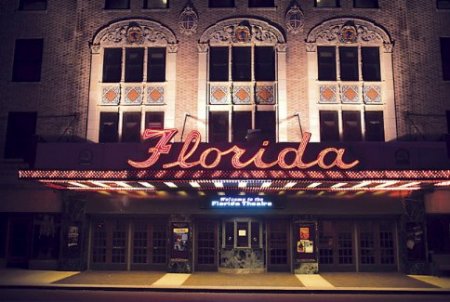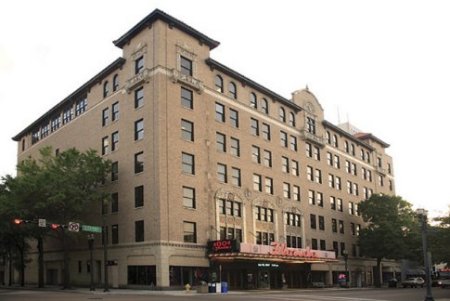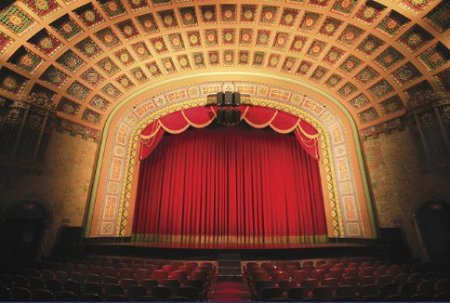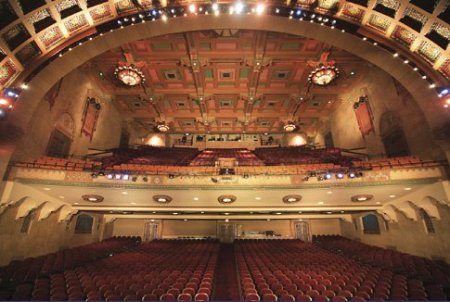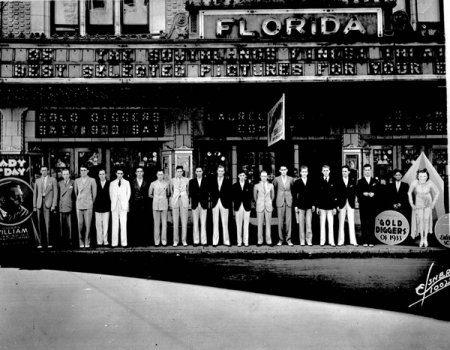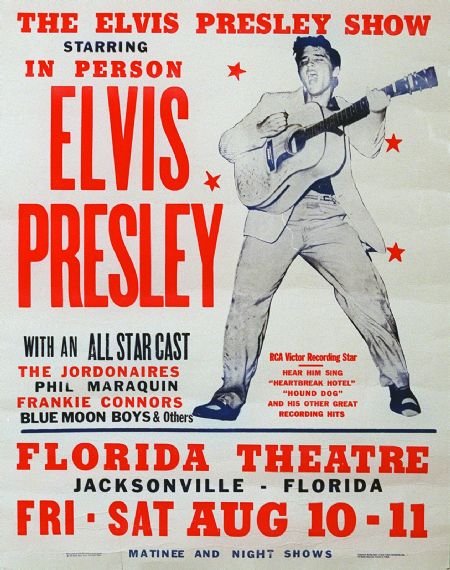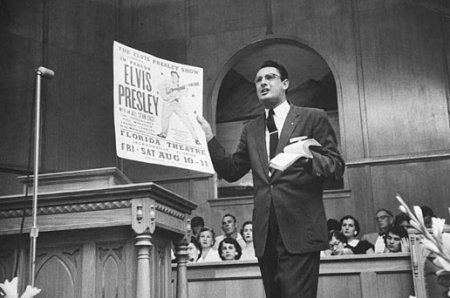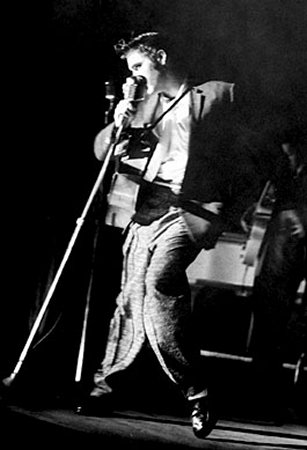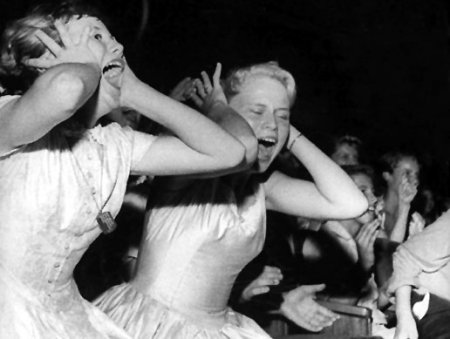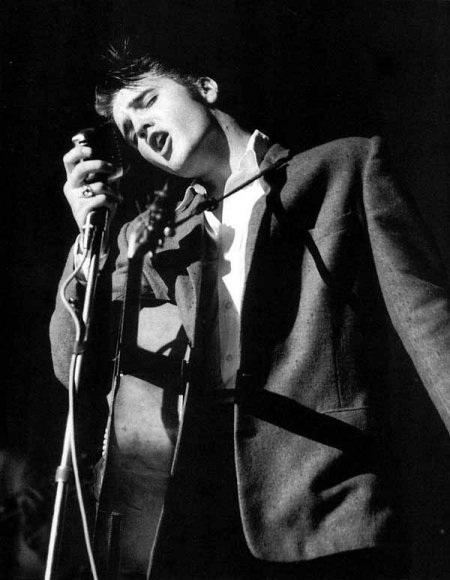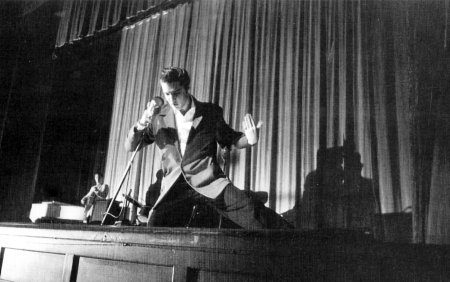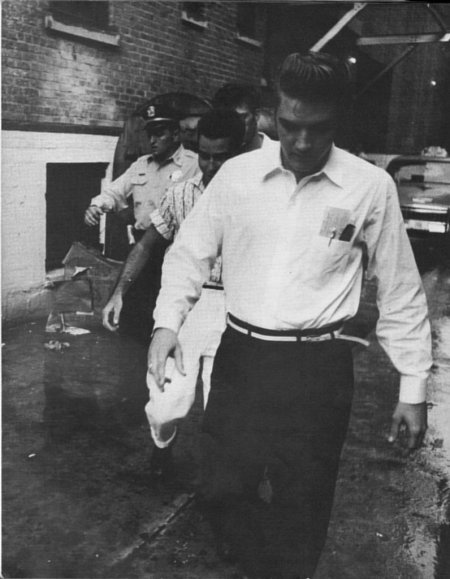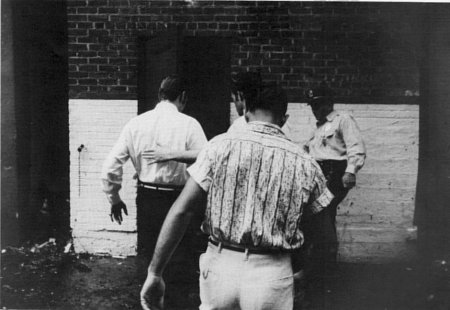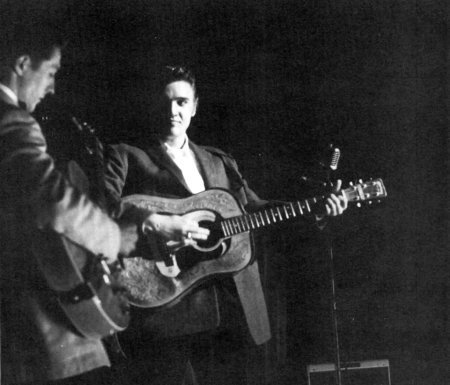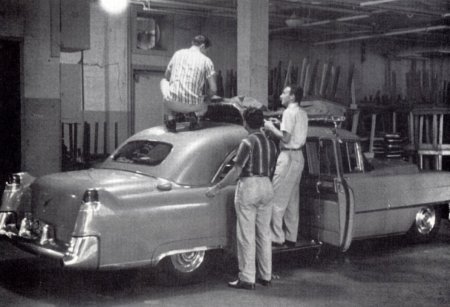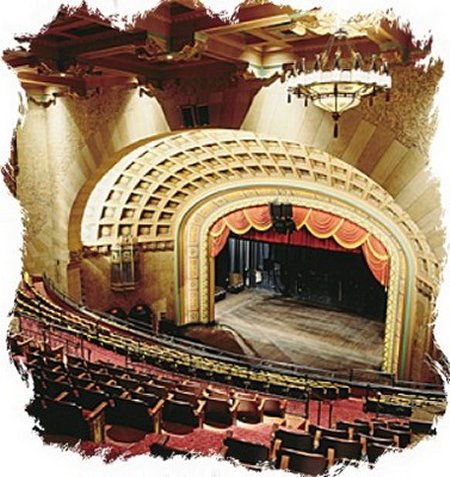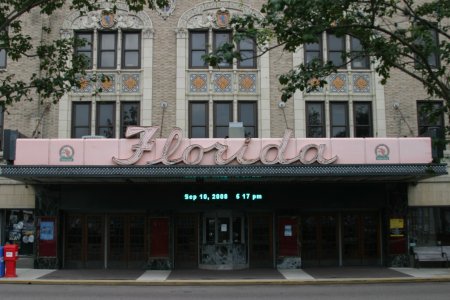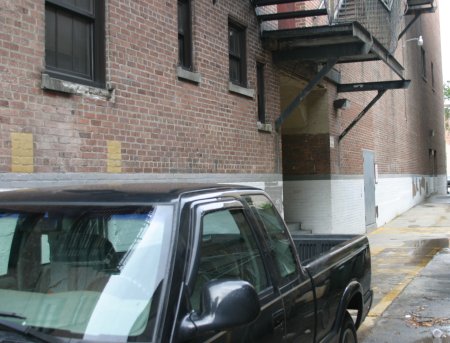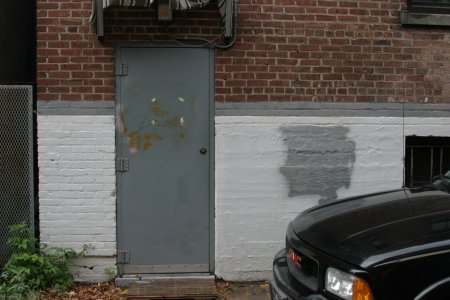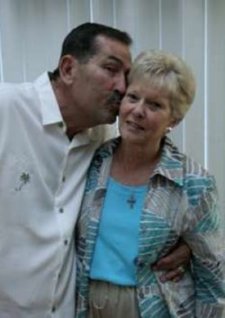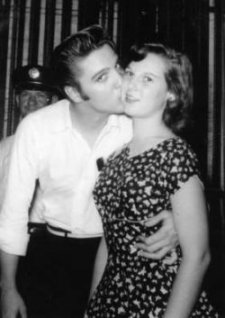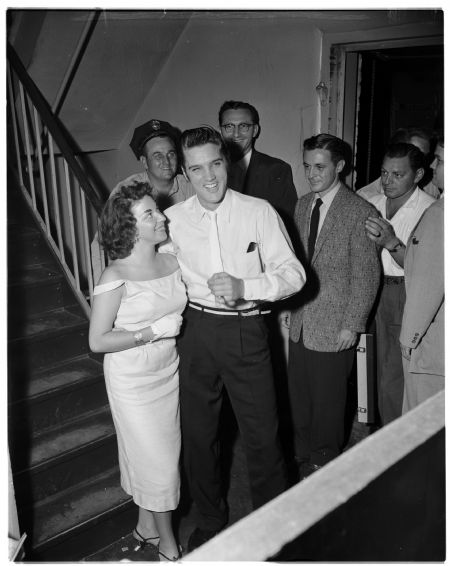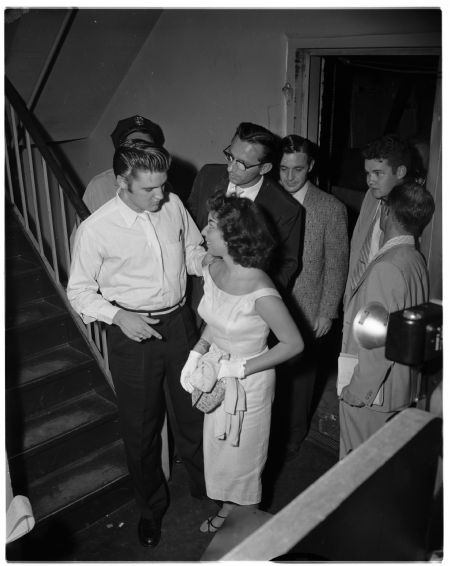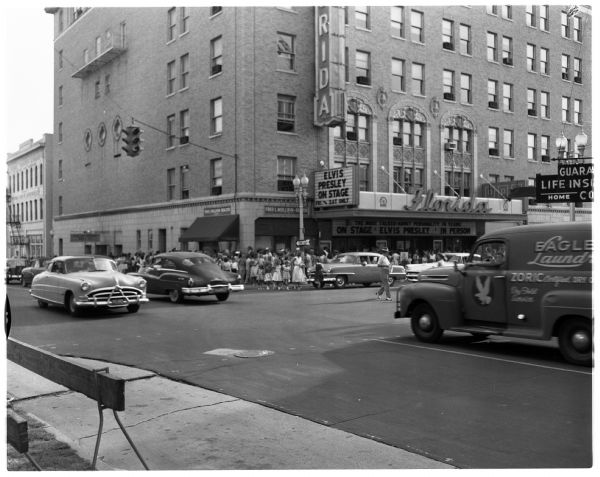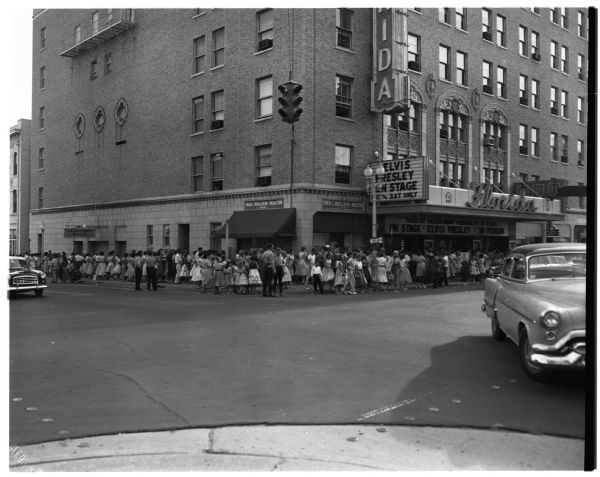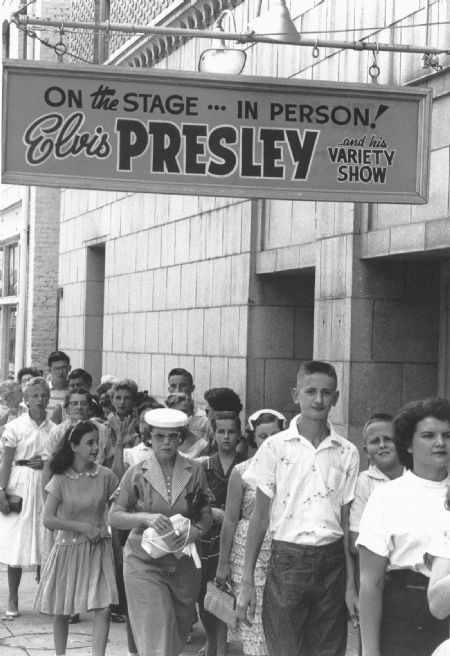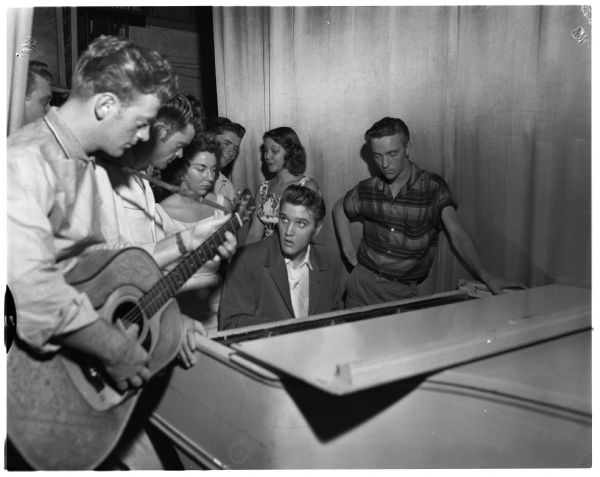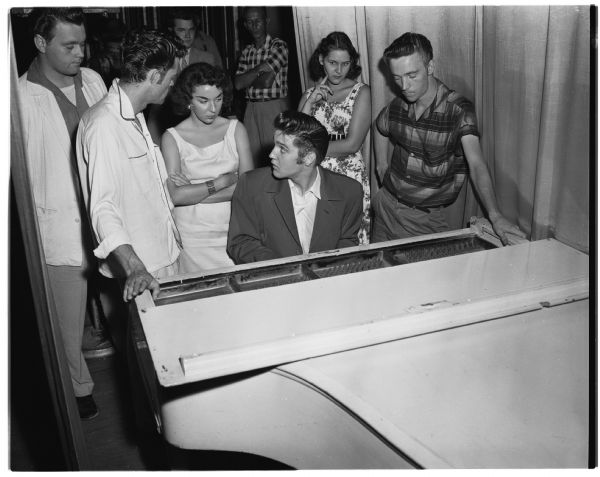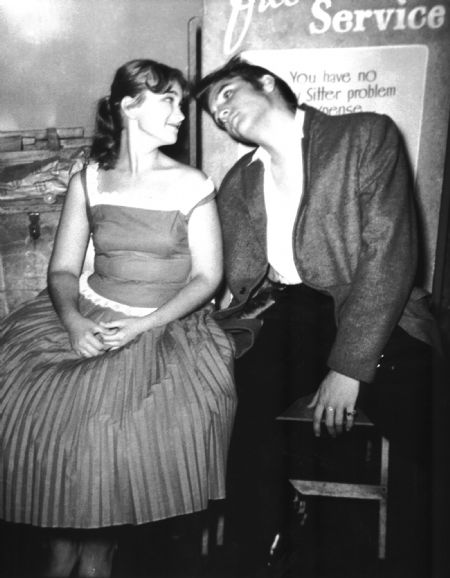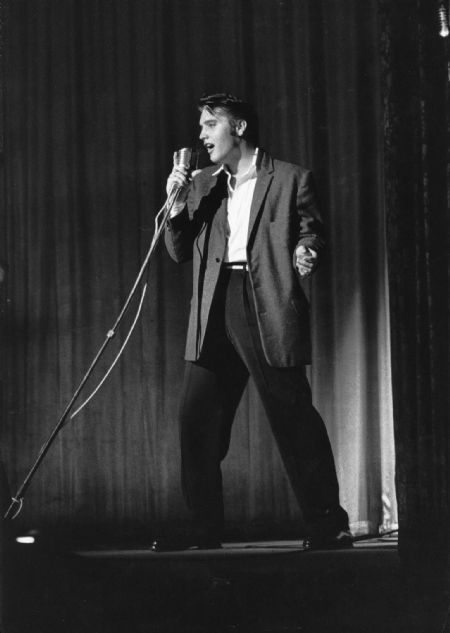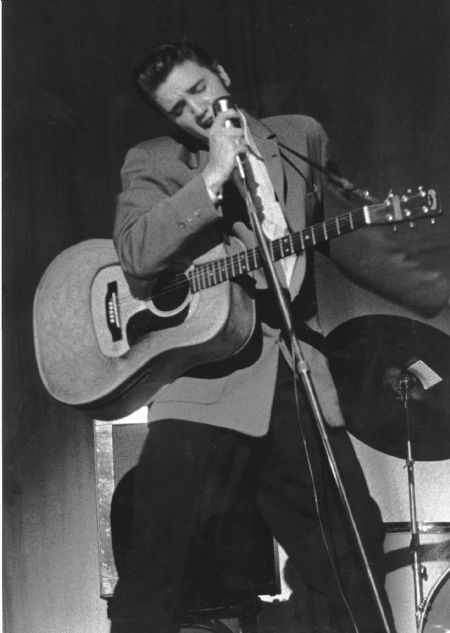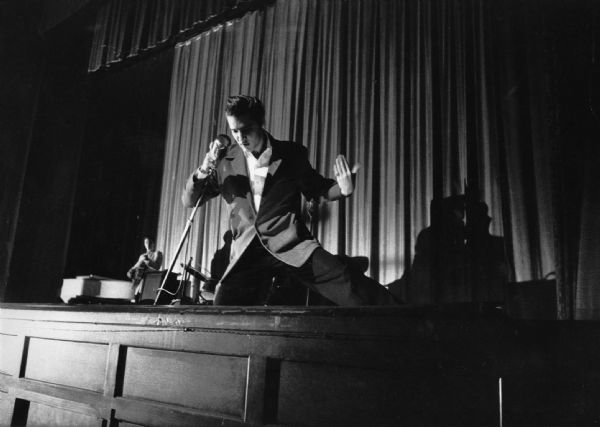 |
The Florida Theater
On the spot where once stood an unkempt police station that had housed
in its sordid career many of the riff-raff of the world, there has come
into being a thing of beauty, a palace of dreams.
But the capacity crowd at the Florida Theatre opening on April 8, 1927, had no reason to foresee any gloom. Theatre-goers were dazzled by the lavish interior, the theme of which was a Moorish courtyard at night. Fountains, dramatic balconies, coffered ceilings and a grand proscenium arch were embellished with polychromatic sculpted ornamentation. The program began with a fanfare from the American Legion Bugle Corps, followed by a live stage show "Pageant of Florida." An eighteen-piece orchestra, which slowly rose into view on its movable orchestra pit, added to the spectacle. This was followed by the movie feature, a silent two-reel comedy titled "Let It Rain," accompanied by Robert E. Mitchell on the "Mighty Wurlitzer" pipe organ. After the program, patrons danced to orchestra music on the open-air rooftop garden, overlooking the city lights and riverfront from the seventh-story level.1
The building itself was nearly as much of a marvel as the surreal movie auditorium inside. Over one-million bricks were used in its construction, and they were laid in a record twenty-one days using ready-mixed mortar for the first time in the South. The exterior walls were given an unusual texture by laying the bricks "with headers advancing." Colorful ornamental terra-cotta was used to frame some of the windows at the second, third, and seventh-story levels. The Mediterranean Revival style facade was designed with a central Baroque parapet framed by twin towers, and it was originally topped by a mission-tile roof. The ground floor was faced with polished limestone and featured several retail storefronts, as well as the entrance to nearly 20,000 feet of upstairs office space, denoting the true mixed-use function of the building. (The roof garden was enclosed in 1938 to provide additional office footage.)1
The structural framing of the theatre is unique, with two-thirds of the massive balcony supported by only two steel trusses, each of which spans ninety feet and is approximately 8 1/2 feet deep. During construction it was reported that one of these girders alone weighed sixty-five tons. Another interesting technical aspect of the theatre is that it was fully air-conditioned at the time of its opening, a rarity in 1927. The basic components of this air system are still operational today. The theatre also had central heating and a central vacuuming system.1
The Florida Theatre survived the Depression by using innovative features such as "Screeno," a bingo game projected on the great screen, and "Bank Night." Perhaps the most widely noted event in the theatre's history occurred in 1956, when Elvis Presley made his appearance there. Life Magazine did a feature article on the performance due to the watchful presence of Judge Marion Gooding, who threatened to throw Presley in jail if his pelvic gyrations were too suggestive.1
The controversy over Elvis' sex appeal reached its Zenith during the summer of '56, when Elvis arrived in Jacksonville for a series of performances. When he had appeared there in 1955, the Jacksonville girls had been so impressed they'd risen as one to strip him of his clothes. Now, in an effort to protect these females from further enjoyment, the Reverend Robert Gray held a prayer meeting at Trinity Baptist Church. There he informed his teenage flock that Elvis Presley had "achieved a new low in spiritual degeneracy. If he were offered his salvation tonight, he would probably say 'No Thanks.'" The teens were then instructed to bow their heads and pray for Elvis' redemption. When Elvis learned of this, he was deeply insulted. "I feel the preacher was just looking for publicity," he said. "I have gone to church since I could walk."2
In Jacksonville they were scheduled to play six shows over a two day period at the Florida Theater. When they arrived they were greeted with unsigned warrants prepared by Juvenile Court Judge Marion Gooding charging Elvis with impairing the morals of minors. The judge told them he was upset over what had happened during their last visit (hysterical fans nearly ripped Elvis' clothes off) and he wanted to prevent a recurrence. If Elvis did those hip-gyrating movements for which he was famous, Gooding warned, he would sign the warrants and Elvis would be taken straight to jail.3
According to the Jacksonville newspaper, prior to the start of the show, a representative of the American Guild of Variety Artists told them that Elvis would have to join the AVGA and that the Colonel would have to post bond and insurance for other acts in the show otherwise they would prevent the acts from appearing. This was no doubt because of Elvis' movements onstage and in spite of the fact that they were already members of the Musician's union. He accepted membership and the Colonel accepted bond and insurance obligations to the AVGA.
With threats of criminal prosecution, Elvis and his management arranged for legal representation when he performed at the theatre. A young attorney by the name of Clarence Wood was hired to represent him. Clarence sat just off stage and was there just in case Judge Gooding decided to issue an arrest warrant at the concert and took the assignment in stride noting that Elvis was just a young man trying to entertain his fans.4
Prior to the show, Judge Gooding invited Elvis to his chambers to set Elvis straight as to recommended restrictions on Elvis’ performance. Elvis declined this meeting but did meet with Judge Gooding at some point during this visit to Jacksonville. Fortunately there were no arrests or riots during the concert and Clarence enjoyed the concert and honor of representing Elvis so much that he forgot to bill Elvis.4
Judge David Gooding, who holds the same seat his father did 50 years ago: Juvenile Court Judge, said "my father had gotten calls from various cities that he had visited -- by law enforcement and judges from the area -- saying that riots had been caused as a result of his performance. My understanding is that a civic group filed a petition to censor the performance. " So the elder Judge Marion Gooding called the "sinful" young singer into his chambers. The two talked over how much -- was too much.5
When they did the concerts, the police were out in force, armed with movie cameras. Elvis did what he was told, but all that nervous energy had to come out in some way. "That's where the curled lip and the little finger thing really got started", said Scotty. "He stood there flat footed and did the whole show." The judge was delighted with the performance. Later, Elvis told reporters he was unhappy about the controversy. "I don't do no dirty body movements," he told a reporter.3
"My father's response, after meeting with Elvis and his lawyers, and hearing from the petitioners, was to instruct him that he would accept wiggling from side-to-side, but no back-and-forth motions," Gooding said. "What I've been told is that Elvis behaved himself like a gentleman. He was represented by an attorney, and the petitioners got along, and everyone got along well. And I think Elvis understood the concerns that my father had at the time. My father was very pleased with the way Elvis behaved himself during the performances in Jacksonville, all three of my sisters had dates and tickets to come to the concerts... Dad let them come. He saw the performances and thought they were appropriate for them to see," the younger judge said. "I can remember back during the '70s and '60s that my father would always watch Elvis with great fondness when he would appear on television. He was a big fan."5
"Drive careful on your way home", Elvis teased the crowd. "and don't let anybody pass you."2 For some reason many are under the assumption that these performances at the Florida Theater were Elvis' first on an indoor stage in that State. That is not correct. The first was at the Peabody Auditorium in Daytona on May 7, 1955. At best, they were his first indoor performances in that city and were the last appearances that the band made in Jacksonville. Their next stop, New Orleans. Ten days later they were in Hollywood and Elvis began work on his first motion picture, "Love Me Tender."
Throughout the early 1960s, locally produced opera, dance and dramatic
presentations in the theatre increased popularity, and civic use—trade shows,
fashion shows, benefits and meetings—contributed to making the Florida Theatre a
hub of constant activity in Jacksonville.
However, the Arts Assembly of Jacksonville purchased the building in the fall of 1981 and, after two years of painstaking restoration efforts, reopened the theatre as a performing arts center in 1983. The Florida Theatre thus joins over fifty other grand movie palaces nationwide that have been restored, including the Tampa Theatre and the Orpheum in Miami. The preservation of the Florida Theatre assures that future generations will be able to experience the grandeur of a bygone spirit of entertainment, as well as to enjoy one of Jacksonville's great interior spaces.1
A new chapter in the theatre's history began on October 1, 1987, when the theatre officially separated from the Arts Assembly of Jacksonville and became an independent entity, legally and financially, governed by its own board of directors. Today, the Florida Theatre is home to about 200 different events annually, with more than 100 days each year used by local not-for-profit organizations. It serves not only as a permanent home for many Jacksonville arts institutions such as Theatreworks, the Florida Ballet, Jacksonville Ballet Theater and the annual Community Nutcracker, but also functions as a true community center, hosting special events, fund raisers, lectures, private receptions, conferences, school programs and corporate meetings. Scores of churches, hospitals, public and private schools, social service agencies, charitable organizations and civic organizations regularly use the theatre. While preserving both its original Mediterranean design and its listing on the National Register of Historic Places, the theatre provides modern stage equipment to meet the complex technical requirements of today’s artists and performing attractions.6
FLORIDA THEATRE BUILDING page added January 12, 2008 1
excerpt from
Jacksonville's Architectural Heritage by Wayne E. Wood and Judy
Davis courtesy
Cinema Treasures Additional Jay B. Leviton Photos at Jacksonville's Florida Theater from contact sheets courtesy Ger Rijff
photos added March 26, 2009
These following photos are courtesy of the Times-Union Archives during Elvis' appearance in Jacksonville on August 10 and 11, 1956. Though many are credited by them as taken by Gary Mills, most appear to have been taken by J. B. Leviton and several were published years ago by Ger Rijff in his book Florida Close-Up.
section added May 6, 2011 Special thanks to Sheila Roth for the lead to the photos and to Cristi Dragomir for the link to the story.
|
||
|
All photos on this site (that we didn't borrow) unless otherwise indicated are the property of either Scotty Moore or James V. Roy and unauthorized use or reproduction is prohibited. |
